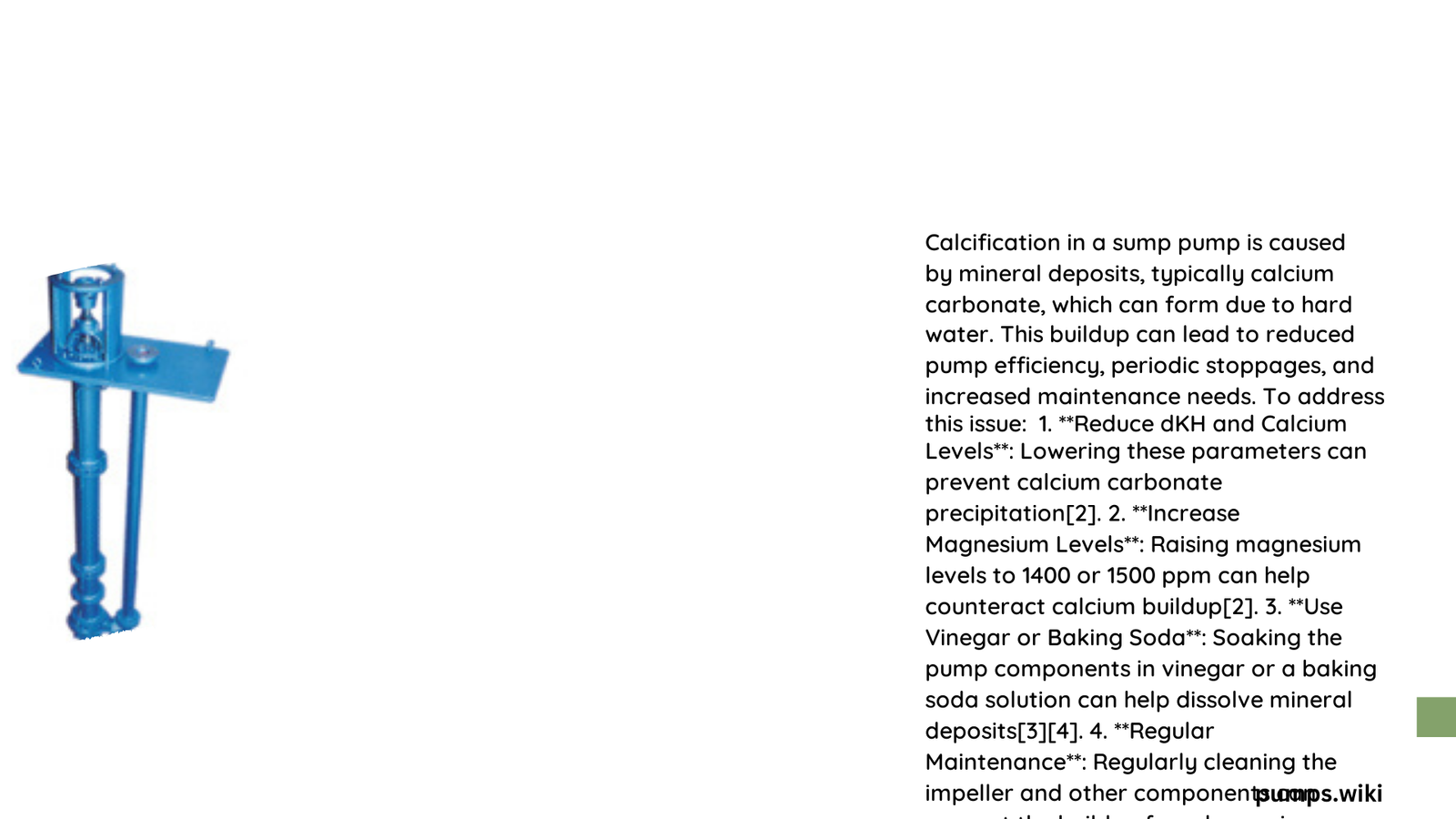Calcification in sump pumps represents a significant challenge for homeowners and maintenance professionals, where mineral deposits like calcium and magnesium accumulate within pump components, progressively reducing efficiency, increasing energy consumption, and potentially causing premature system failure. These mineral buildups can dramatically impact water flow, mechanical performance, and overall pump lifespan, requiring strategic intervention and proactive maintenance strategies.
What Causes Calcification in Sump Pumps?
Calcification emerges from complex interactions between water chemistry, environmental conditions, and specific mineral concentrations. Understanding these root causes is crucial for effective prevention and management.
Water Chemistry Factors
| Mineral | Impact on Calcification | Concentration Risk |
|---|---|---|
| Calcium | High scale formation potential | Moderate to High |
| Magnesium | Secondary scale contributor | Low to Moderate |
| Carbonate | Accelerates mineral precipitation | High |
Key Mineral Interaction Mechanisms
- Chemical precipitation of calcium carbonate
- Temperature-induced mineral separation
- pH level influences on scale formation
How Does Water Hardness Contribute to Calcification?
Water hardness directly correlates with calcification risk. Regions with high mineral content in groundwater experience more significant sump pump scaling challenges.
Hardness Classification:
– Soft Water: 0-60 mg/L
– Moderate Water: 61-120 mg/L
– Hard Water: 121-180 mg/L
– Very Hard Water: 181+ mg/L
What Are the Performance Implications of Calcification?
Calcification progressively degrades sump pump functionality through multiple mechanisms:
- Flow Rate Reduction
- Narrowed pipe diameters
- Increased hydraulic resistance
-
Potential 30-50% flow capacity reduction
-
Energy Efficiency Decline
- Higher motor workload
- Increased electrical consumption
-
Potential 20-40% efficiency loss
-
Mechanical Stress
- Uneven component wear
- Increased friction
- Accelerated system degradation
How Can Homeowners Prevent Calcification?
Effective prevention requires a multi-faceted approach targeting water chemistry and system maintenance.
Preventive Strategies
- Install water softening systems
- Implement regular descaling treatments
- Monitor water pH levels
- Conduct periodic pump inspections
- Use specialized chemical treatments
What Are Effective Removal Techniques?
Recommended Removal Process:
1. Disconnect power supply
2. Disassemble pump components
3. Apply descaling solution
4. Gentle mechanical removal
5. Thorough rinsing
6. Reassemble and test
Professional Recommendations
- Annual professional inspection
- Use manufacturer-recommended maintenance protocols
- Track water quality metrics
- Replace components showing significant mineral buildup
Conclusion

Calcification in sump pumps represents a nuanced challenge requiring proactive management, technical understanding, and strategic maintenance. By implementing comprehensive prevention strategies, homeowners can significantly extend pump lifespan and maintain optimal system performance.
